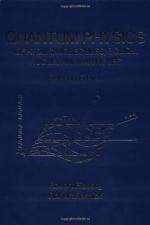|
This section contains 642 words (approx. 3 pages at 300 words per page) |

|
The word nucleus is a derivative of the Latin word nux, meaning nut or kernel. Around 1909, Ernest Rutherford gave that name to the dense, central part of the atom that he and his colleagues Hans Geiger (1882-1945) and Ernest Marsden discovered by bombarding thin sheets of gold foil with alpha particles. The results of the experiment led Rutherford to propose that all the positive charge of an atom and almost all its mass are located in the nucleus. He developed this model based on the behavior of the positively charged alpha particles as they hit the gold foil. Although most of them passed right through, some were deflected at various angles, including angles that directed the alpha particles back toward their source. Since most of the alpha particles passed through undeflected, Rutherford concluded that the positive part of the atom was not evenly distributed throughout the atom. He...
|
This section contains 642 words (approx. 3 pages at 300 words per page) |

|


